25+ SAMPLE Construction Waiver Form
-
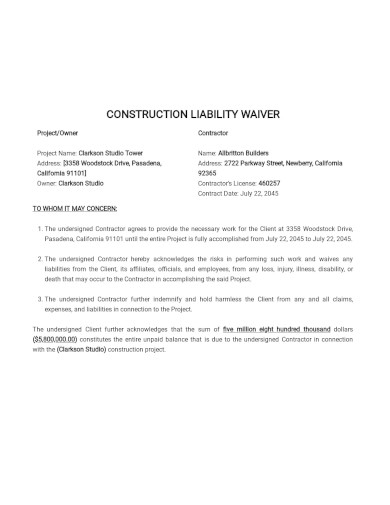
Construction Liability Waiver Form Template
download now -

Construction Lien Waiver Template
download now -
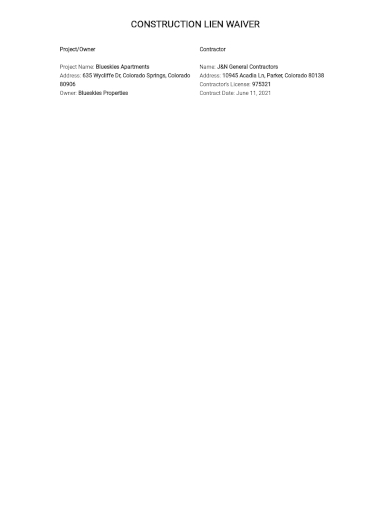
Lien Waiver Form Template
download now -
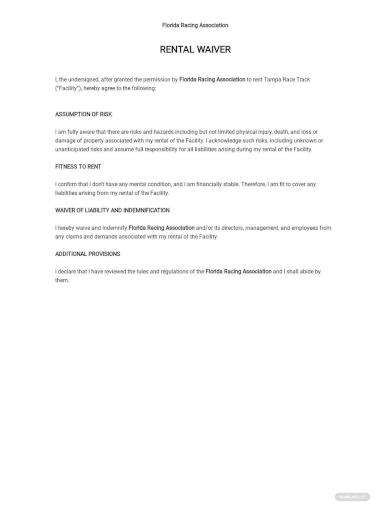
Rental Waiver Form Template
download now -
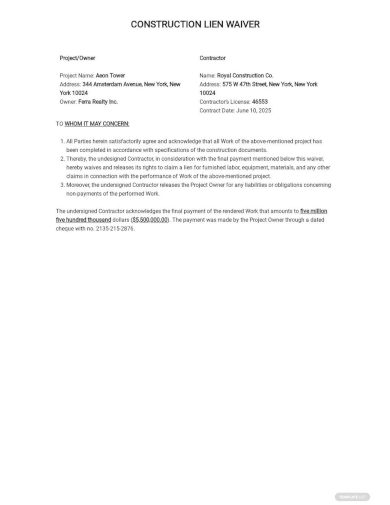
Sample Construction Waiver Template
download now -

Waiver of Construction Lien Form
download now -
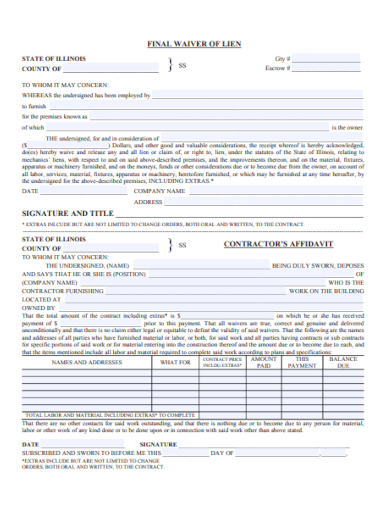
Final Waiver of Construction Lien Form
download now -
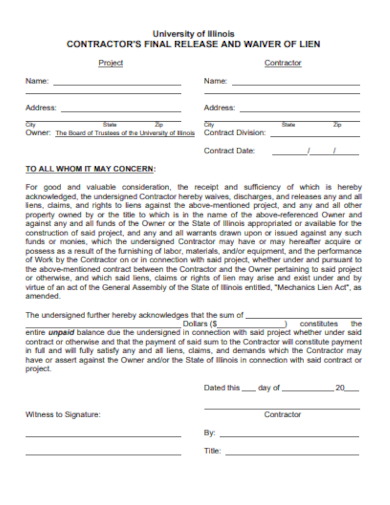
Contractor Release Waiver of Lien Form
download now -
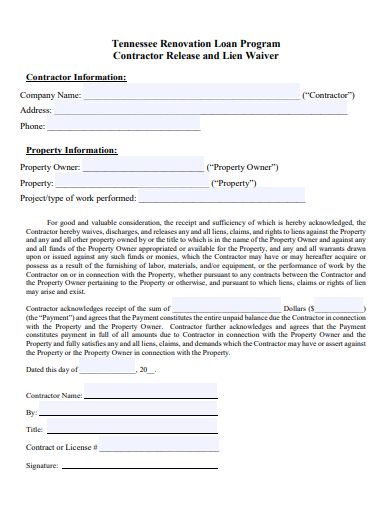
Contractor Release and Lien Waiver Form
download now -
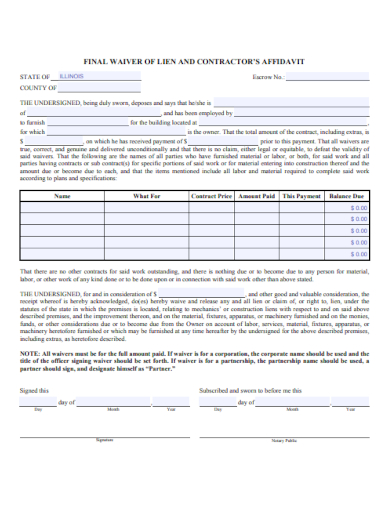
Construction Contractor Waiver of Lien Form
download now -
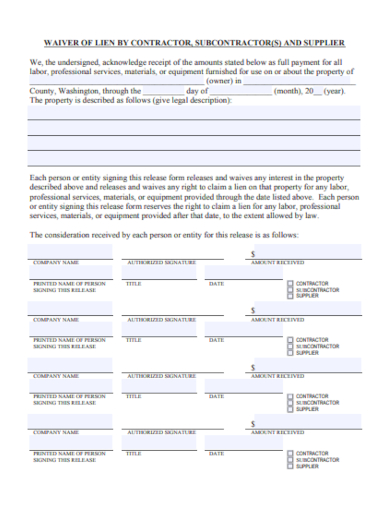
Construction Supplier Waiver Form
download now -
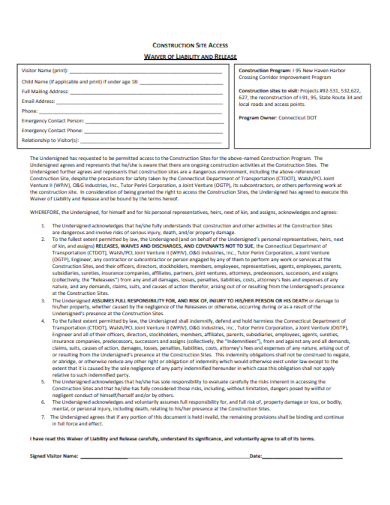
Construction Site Waiver Form
download now -

Construction Waiver Request Form
download now -
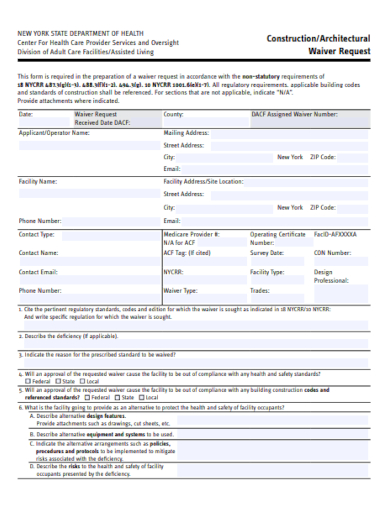
Construction Architectural Waiver Form
download now -
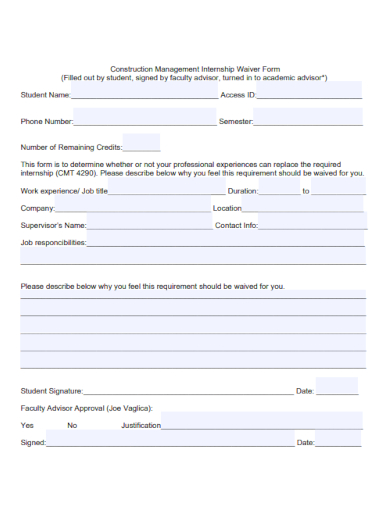
Construction Management Waiver Form
download now -
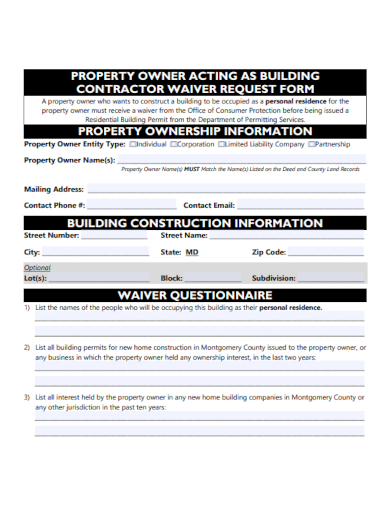
Construction Property Waiver Form
download now -
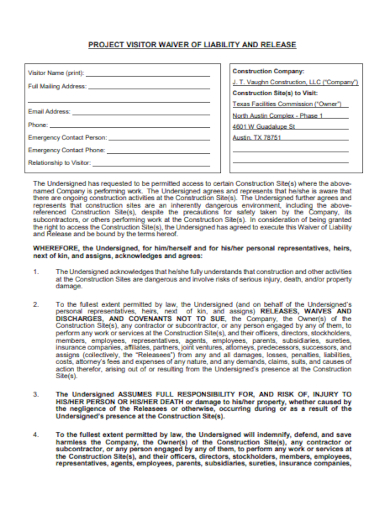
Construction Project Waiver Form
download now -
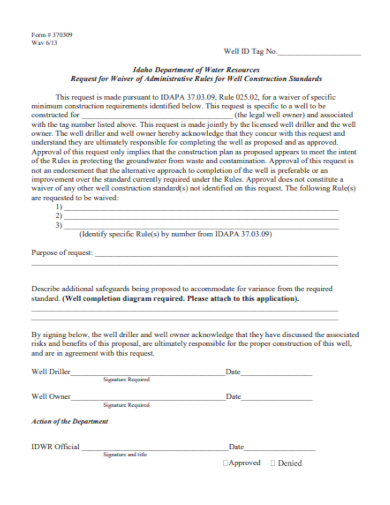
Construction Request of Waiver Form
download now -
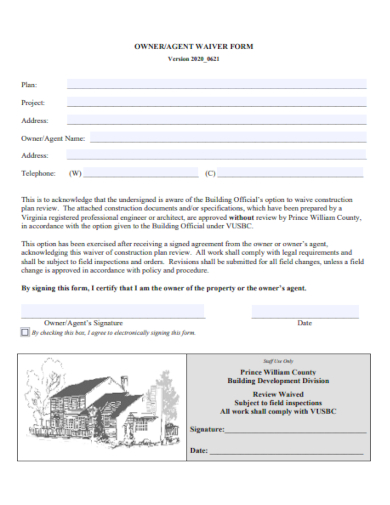
Construction Agent Waiver Form
download now -
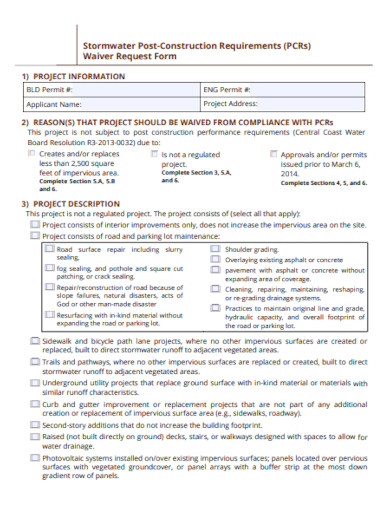
Post-Construction Waiver Form
download now -
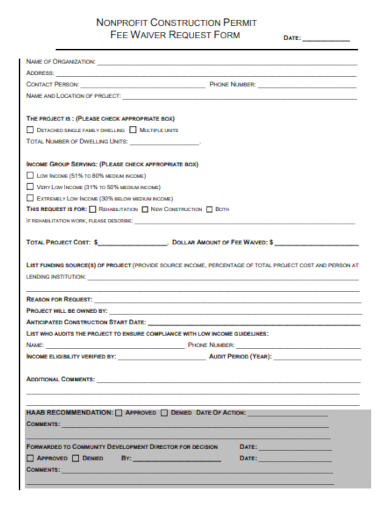
Construction Permit Waiver Form
download now -
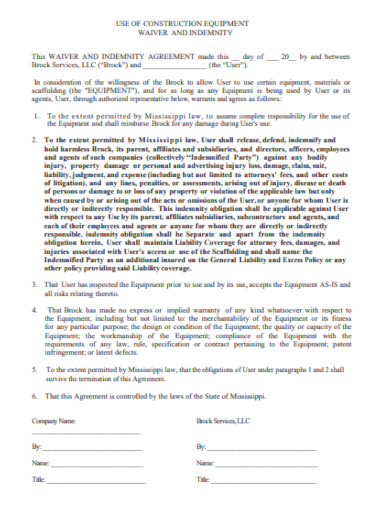
Construction Equipment Waiver Form
download now -
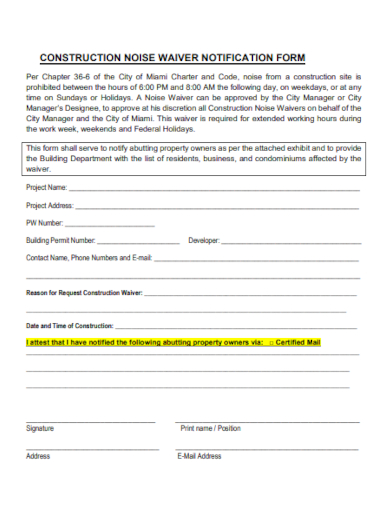
Construction Waiver Notification Form
download now -
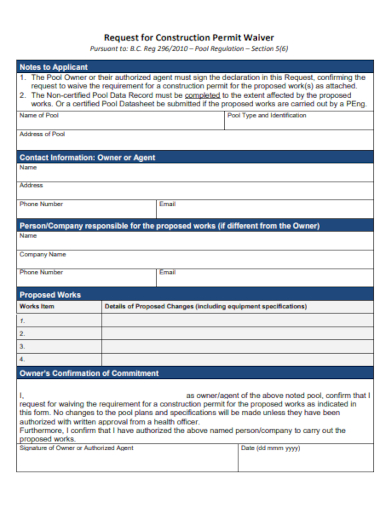
Request for Construction Permit Waiver Form
download now -

Construction Lien Waiver Release Form
download now -
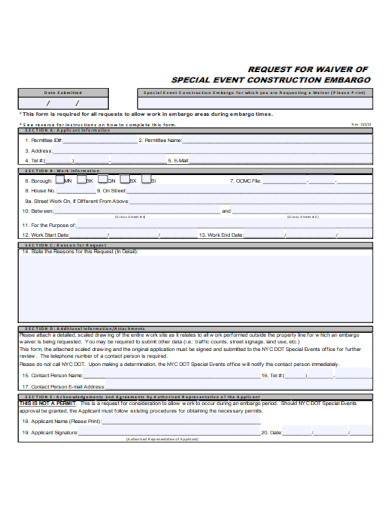
Construction Event Request for Waiver Form
download now -
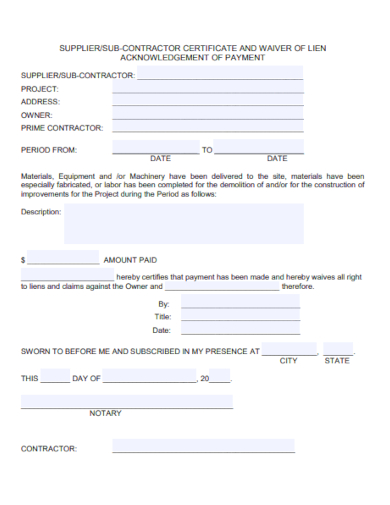
Construction Payment Waiver Form
download now
FREE Construction Waiver Form s to Download
25+ SAMPLE Construction Waiver Form
Definition:
Understanding the Construction Waiver Form:
Different Types of Waivers:
Crafting an Effective Waiver Form:
Implications of Not Using a Waiver:
Advantages of Using the Waiver Form:
The Digital Age and Waiver Forms:
The Crucial Role of Clarity:
What measures are taken to ensure that waivers are voluntary and legally binding?
How does the waiver form protect property owners from potential double payments?
Why should property owners and lenders verify the validity of waiver forms?
Can waiver forms be used for both residential and commercial construction projects?
When should parties involved in construction projects exchange waiver forms?
Definition:
A Construction Waiver Form is a legal document used in the construction industry to release a party’s right to make future claims against another party, typically in exchange for payment or settling a dispute. This form serves as evidence that specific obligations have been met, preventing future liabilities and clarifying any pending financial or work-related concerns.
Understanding the Construction Waiver Form:
A Construction Waiver Form, often termed a lien release or waiver of rights, is integral in safeguarding parties in a construction project. By voluntarily relinquishing certain rights, typically the right to file a lien, both contractors and property owners can move forward without looming financial disputes.
Different Types of Waivers:
While many might think of a waiver as a straightforward document, several forms can suit different circumstances:
Unconditional Waiver and Release Upon Progress Payment:
This waiver is executed when a contractor or supplier has received a progress payment and waives lien rights unconditionally for the work covered by that payment.
Conditional Waiver and Release Upon Progress Payment:
Used when a contractor or supplier anticipates a progress payment but hasn’t received it yet. The waiver becomes effective once the payment clears, ensuring protection if the payment doesn’t materialize.
Unconditional Waiver and Release Upon Final Payment:
When the contractor or supplier has received their final payment and waives all potential lien rights against the property, this waiver is utilized. It provides assurance to property owners that no future liens for the stated work will be filed.
Conditional Waiver and Release Upon Final Payment:
This waiver is used when a contractor or supplier expects a final payment but hasn’t received it. The waiver becomes effective only upon actual receipt and clearance of the said payment.
Crafting an Effective Waiver Form:
For a waiver to be considered valid and effective:
Know Your Jurisdiction:
Each state or region may have specific laws and regulations regarding waivers in the construction industry. Familiarizing yourself with these can ensure that your waiver form is compliant and enforceable.
Clarity and Precision:
The language used should be straightforward and free of jargon. Clearly state what rights are being waived and under what conditions.
Include Essential Information:
This includes the names of the parties involved, the project description of services or goods provided, the payment amount, and the date. Also, reference the specific project and its location.
Specify the Type of Waiver:
Whether it’s an unconditional or conditional waiver, and whether it pertains to a progress or final payment, should be clearly mentioned.
Incorporate Digital Signatures:
With the rise of digital transactions, integrating a mechanism for digital signatures can expedite the process, especially for companies that operate remotely or handle numerous projects simultaneously.
Legal Review:
Before finalizing and using the waiver form, have it reviewed by a legal expert in construction law. This step ensures that the waiver form is both comprehensive and compliant with local regulations.
Implications of Not Using a Waiver:
Operating without waivers can lead to:
- Exposure to Financial Risks: Without a waiver, contractors and subcontractors are at risk of not receiving payment even after completing their part of the project. This can lead to cash flow issues and financial instability.
- Potential Legal Disputes: In the absence of clear waivers, parties are more likely to engage in prolonged legal battles over payments or services rendered, consuming time and resources.
- Delayed Project Completion: Disputes over payments can halt the progress of a project, leading to delays in completion and potential penalties.
- Eroded Trust: The absence of waivers can lead to mistrust between parties involved in a project. Clear waivers delineate responsibilities and expectations, fostering trust.
- Increased Project Costs: Legal disputes, delayed payments, or halted projects can escalate project costs, impacting profitability.
- Potential for Double Payments: Without a waiver in place, property owners might risk paying for the same service or material twice if a subcontractor places a lien on the property after the general contractor has already been paid.
- Damage to Reputation: Frequent disputes over payments can harm the reputation of contractors, making it difficult to secure future projects or collaborations.
- Lost Business Opportunities: When embroiled in payment disputes, businesses can miss out on other lucrative opportunities, hampering growth.
Advantages of Using the Waiver Form:
Employing a waiver form can:
Protection Against Unforeseen Claims:
By using a waiver form, contractors and subcontractors relinquish their right to make future claims regarding specific aspects of a project, thus preventing surprise legal actions.
Clear Communication of Rights:
Waiver forms clearly outline the rights and obligations of each party, ensuring that everyone is on the same page and minimizing misunderstandings.
Timely Payments:
Conditional waivers can be linked to payments, ensuring that parties are paid promptly upon the completion of specific milestones or tasks.
Enhanced Professional Relationships:
With clear boundaries set by waivers, business relationships are less likely to sour due to disputes, fostering long-term collaboration.
Protection for Property Owners:
For property owners, waivers provide protection against potential liens or claims from subcontractors if the primary contractor fails to make due payments.
Boosted Confidence:
Knowing that potential pitfalls and disputes have been addressed through waivers, all parties involved can approach projects with increased confidence.
Flexibility in Customization:
Waiver forms can be customized to address the unique needs of each project agreement, providing flexibility while ensuring protection.
The Digital Age and Waiver Forms:
With advancements in technology:
- Integration with Digital Management Systems: The rise of construction management software means waiver forms can be integrated into digital systems, allowing for easy tracking, filing, and retrieval of documents.
- E-Signatures: Modern technologies allow for legally binding electronic signatures, streamlining the signing process without the need for physical paperwork.
- Real-time Updates: Digital waiver forms can be updated in real-time, ensuring that all parties have access to the most recent version of the agreement.
- Easy Distribution and Sharing: Cloud storage and digital platforms make it easier than ever to share waiver forms with relevant parties instantly, fostering swift communication.
- Reduction in Paperwork: The shift towards digital forms reduces the need for physical storage space and minimizes environmental impact.
- Automated Reminders: Automated systems can send reminders for the renewal or review of waiver forms, ensuring that they remain up-to-date.
- Enhanced Security: Digital encryption and secure storage solutions protect sensitive information in waiver forms from unauthorized access.
- Data Analytics: Digital waiver forms allow for easy data extraction, enabling companies to analyze patterns, such as frequent causes of disputes, to further improve their processes.
- Accessibility: Digital platforms ensure waiver forms are accessible from any device, anywhere, ensuring continuity in operations even when on-the-move.
- Integration with Other Documents: In digital ecosystems, waiver forms can be linked to related documents like contracts, permits, and payment schedules, ensuring a cohesive flow of information.
The Crucial Role of Clarity:
Ensuring that all parties clearly understand the terms of the waiver is paramount. Ambiguities or misunderstandings can lead to unnecessary disputes or legal challenges. Hence, every clause should be defined clearly, and expert consultation is advised for drafting.
Avoiding Misunderstandings:
Clear communication is fundamental to ensure that all parties involved have the same understanding of terms, expectations, and deliverables. This reduces the potential for disputes and misinterpretations.
Enhancing Trust:
When information is presented clearly, it establishes credibility and trust. Parties feel more confident entering agreements when they fully grasp the stipulations.
Facilitating Decision-Making:
Clear information streamlines the decision-making process. Stakeholders can make informed choices without needing constant clarifications.
Efficient Workflows:
Clarity in instructions and expectations ensures that tasks are done correctly the first time, reducing rework and saving both time and resources.
Regulatory Compliance:
In many sectors, especially construction, regulatory bodies demand transparency and clarity in documentation for compliance purposes. Clear documents can expedite approvals and reduce bureaucratic delays.
Strengthening Relationships:
When both parties understand their rights, responsibilities, and the scope of work, it sets the foundation for a harmonious working relationship.
Reducing Legal Liabilities:
Clear terms and conditions in contracts or agreements minimize ambiguities that could be exploited in legal disputes. This clarity protects the interests of all parties involved.
Enhancing Stakeholder Engagement:
Clarity in communication ensures that stakeholders, whether they’re investors, clients, or team members, remain engaged and informed, fostering a sense of inclusion and collaboration.
Promoting Accountability:
When roles, responsibilities, and expectations are articulated with clarity, it promotes accountability, as each party knows exactly what’s expected of them.
What measures are taken to ensure that waivers are voluntary and legally binding?
To ensure waivers are voluntary and legally binding, they must be presented clearly, without coercion, and with full disclosure of risks involved. Both parties should have the opportunity to review and seek legal counsel before signing. The language should be unambiguous, and the signing party should acknowledge understanding and acceptance.
How does the waiver form protect property owners from potential double payments?
The waiver form, especially in construction, acts as a receipt indicating that contractors or subcontractors have received payment for services rendered. By obtaining signed waivers from parties involved, property owners have evidence that obligations are met, protecting them from potential double payment claims or liens on their property in the future.
Why should property owners and lenders verify the validity of waiver forms?
Property owners and lenders should verify waiver forms’ validity to ensure they’re protected from potential future claims or liens. Valid waivers confirm that contractors and subcontractors have been compensated, safeguarding owners and lenders from legal disputes, financial burdens, and project delays arising from unresolved payment issues or fraudulent claims.
Can waiver forms be used for both residential and commercial construction projects?
Yes, waiver forms can be used for both residential and commercial construction projects. They serve as written evidence that contractors or subcontractors have relinquished their rights to place a lien on a property after receiving payment, ensuring clarity, reducing potential disputes, and protecting the interests of property owners and lenders alike.
When should parties involved in construction projects exchange waiver forms?
Parties involved in construction projects should exchange waiver forms upon making and receiving payments at various milestones. Typically, when a contractor or subcontractor receives payment for completed work, they provide a waiver form to the property owner or general contractor, ensuring that liens will not be placed for the paid work.
The Construction Waiver Form is an indispensable asset in the construction sector, acting as a protective shield against potential conflicts. By streamlining processes and bolstering clear communication, it fortifies trust between involved parties. Embracing such forms not only enhances operational efficiency but also boosts online content visibility when discussed with keen keyword optimization, cementing its role in both field operations and digital spaces.
